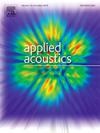More than noise: Lived experiences of autistic people in real-life acoustic environments
IF 3.4
2区 物理与天体物理
Q1 ACOUSTICS
引用次数: 0
Abstract
The study of the human response to sound has typically considered the average experiences of young individuals with standard hearing capabilities and sensitivity, and although research on high noise sensitivity and its effects is extensive, practical considerations in acoustics are usually limited to specific facilities. Thus, the acoustical characteristics of daily life environments can constitute an important barrier, for example, to autistic people, who often experience high noise sensitivity. To contribute to an in-depth understanding of the impact of noise sensitivity in real-life scenarios, this study presents the results of interviews with 12 autistic adults living in the UK, exploring their lived experiences with sounds, spaces and society. Four themes were developed in the thematic analysis of the interviews: 1) High sound sensitivity affects every aspect of life; 2) Lack of understanding and acceptance − sensory gaslighting; 3) Agency is crucial; 4) Positive impact of music and natural environments. The findings suggest that challenges associated to high noise sensitivity can be the result of a heightened response to sound, but are significantly aggravated by social attitudes to sensory differences and pre-conceptions of what is “normal”. Failing to consider diversity in auditory experiences can have important negative consequences for personal and professional life, financial prospects, health and overall well-being. This study calls to observe these experiences under a human rights lens to guarantee the full participation in society on an equal basis, and to continue the work in aural diversity and auditory accessibility in acoustics and soundscape research and practice.
求助全文
约1分钟内获得全文
求助全文
来源期刊

Applied Acoustics
物理-声学
CiteScore
7.40
自引率
11.80%
发文量
618
审稿时长
7.5 months
期刊介绍:
Since its launch in 1968, Applied Acoustics has been publishing high quality research papers providing state-of-the-art coverage of research findings for engineers and scientists involved in applications of acoustics in the widest sense.
Applied Acoustics looks not only at recent developments in the understanding of acoustics but also at ways of exploiting that understanding. The Journal aims to encourage the exchange of practical experience through publication and in so doing creates a fund of technological information that can be used for solving related problems. The presentation of information in graphical or tabular form is especially encouraged. If a report of a mathematical development is a necessary part of a paper it is important to ensure that it is there only as an integral part of a practical solution to a problem and is supported by data. Applied Acoustics encourages the exchange of practical experience in the following ways: • Complete Papers • Short Technical Notes • Review Articles; and thereby provides a wealth of technological information that can be used to solve related problems.
Manuscripts that address all fields of applications of acoustics ranging from medicine and NDT to the environment and buildings are welcome.
 求助内容:
求助内容: 应助结果提醒方式:
应助结果提醒方式:


